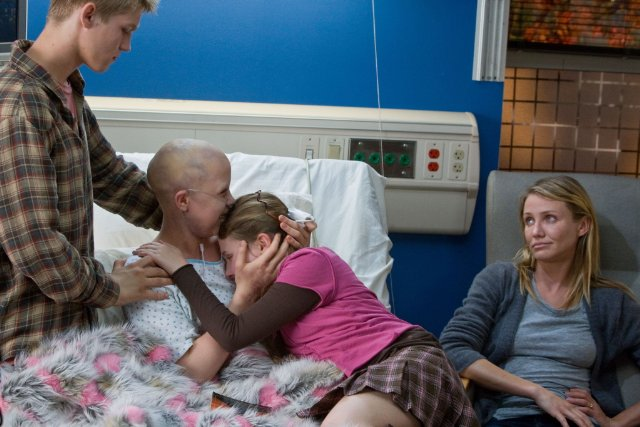I was once told in a screenwriting workshop in Cologne that characters must always have a visible, tangible goal, the more concrete the better. If she wants to win a contest, she wants to win a medal. If he wants his son back, he wants the custody papers. But what about stories where the character has no goal, such as the Station Agent? This post looks at how this film works without a concrete goal, and how instead of an aimless, wandering narrative, becomes a gripping, emotional drama.
Peter Dinklage, who plays Tyrion Lannister in HBO’s A Game of Thrones, got his first central role in the Station Agent in 2003, a film which focuses solely on the difficulties that being a dwarf has placed upon his character. Fin avoids all social situations, be it riding on the train or going to bars, and when we’re first introduced to his character in a day in the life sequence of him working at a toy store in the city, we gather he only has one friend in the world, Henry, and besides that, keeps himself to himself, and avoids reacting to the many japes people make at his expense. It’s a defence mechanism to keep the bad people out, but has instead distanced Fin from life’s good experiences.
This distancing is Fin’s weakness, his character flaw that needs to change for him to find happiness, and he has no intention of changing any time soon. Spoilers follow!
Henry dies suddenly of a heart attack and, in accordance with his will, the toy shop is closed and its stock liquidated. With noting left, except the inheritance of a small train depot in rural New Jersey, Fin walks (he doesn’t drive or take a train) all the way to his new property in the small town of Newfoundland. Fin could easily keep himself to himself in the city, but in this small, lonely community, Fin has to avoid the advances of two people desperate for his friendship.
To recap, we have this guy, Fin, a dwarf, who would rather walk many miles than take a crowded train, who tries his hardest to avoid Joe, who works the refreshment van right outside the train depot, and Olivia who has recently lost her son, and who, after accidentally running Fin down a few times, tries to apologise to him. Fin is avoiding things (albeit rather actively) rather than trying to get them, but this only works because of the active characters around him.
Olivia sees a bit of her son in Fin, and gradually she and Joe, through their constant advances, and their interest in Fins hobbies, in train watching, and train chasing (which Fin couldn’t do until they came along as he can’t drive) they become close friends.
As in Thomas McCarthy’s second film, The Visitor, around the middle of the film we see our passive hero become active. In the Visitor, Walter, a lonely businessman discovers two immigrants in his apartment, Tarek and Zainab, and lets them stay. He bonds with Tarek over a common interest in music (notice again an interesting hobby forming a bridge of friendship, but one that is central; the music is actually him grieving for his dead wife, as trains form the theme of distancing through how Fin walks the tracks, the right of way as he calls it, as opposed to travelling on trains).
Then, something happens. Tarek is arrested and Walter has to fight to get him released. In the Station Agent, the goal is less concrete, but it's still there. Olivia’s estranged husband comes to visit one morning whilst Fin and Joe are in the house, and after that she ignores them. Fin makes it his mission to get back her friendship. He gets hurt, and hurts others too, and this gives him the push he needed to come into the open and live; he gets drunk in a bar, stands on a bar stool and tells those making japes to take a long, hard look at him.
This film works because of the characters around the protagonist. Olivia has a problem which directly involves Fin (she admits, when Fin saves her from killing herself, that she wanted her son back and was distant from Fin as he reminded her of him), and allows Fin through no fault of his own to cause her hurt. She’s the hero of the film, and without her, Fin wouldn’t change. Joe is great too, because he is lonely and desperately wants a friend.
As drama works when someone wants something and has trouble getting it, a concrete goal lets this build easily, and lets us know if they pass or fail. But I think it’s possible for a film to work without a goal, as long as there are active characters to build conflict, the protagonist has a weakness, and is in a situation that encourages him to embrace his need.
The Station Agent, on IMDB, by Thomas McCarthy (2003)
The Visitor, on IMDB, by Thomas McCarthy (2007)
Here’s a link to The Visitor script. If anyone can find the script of the Station Agent let me know!





